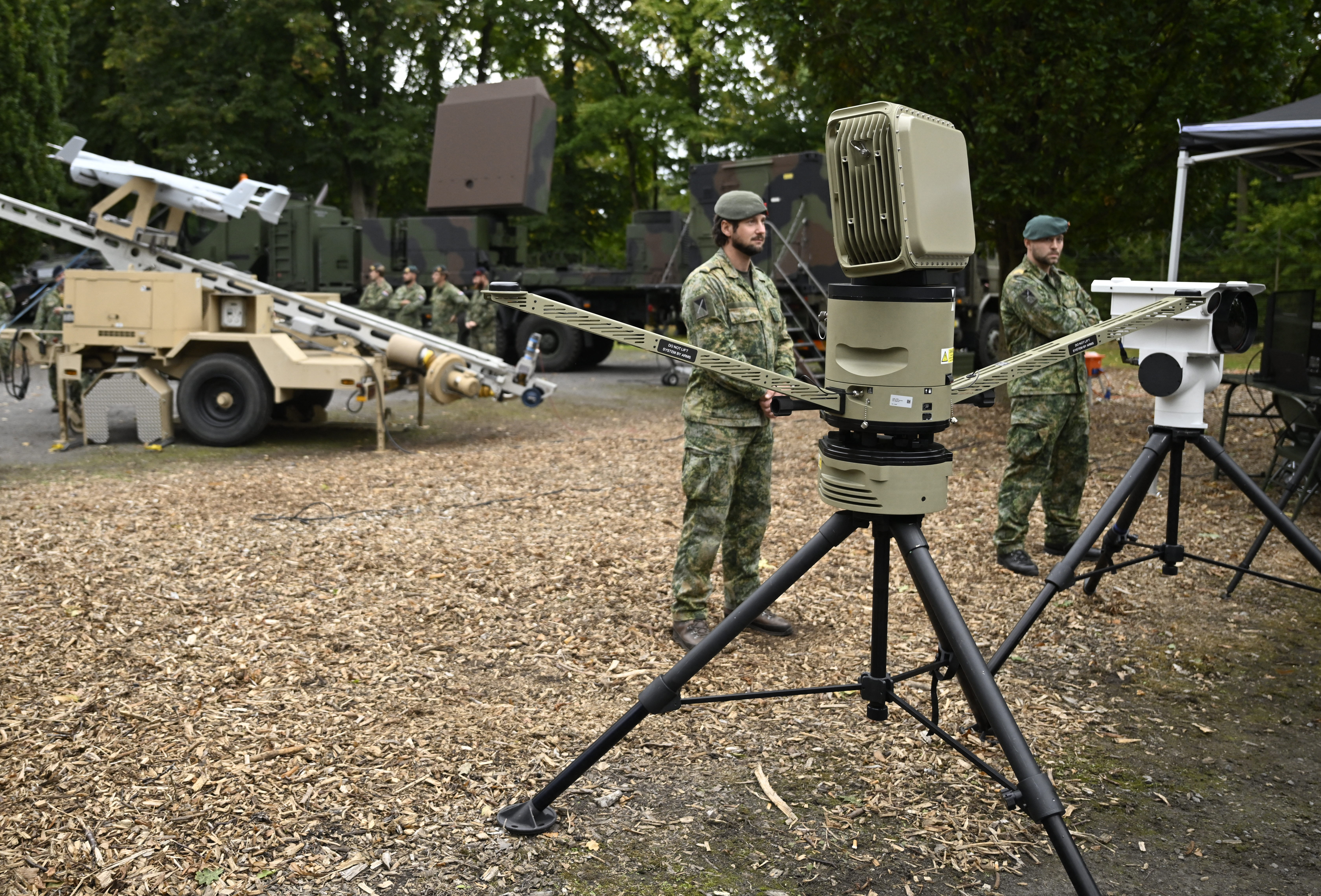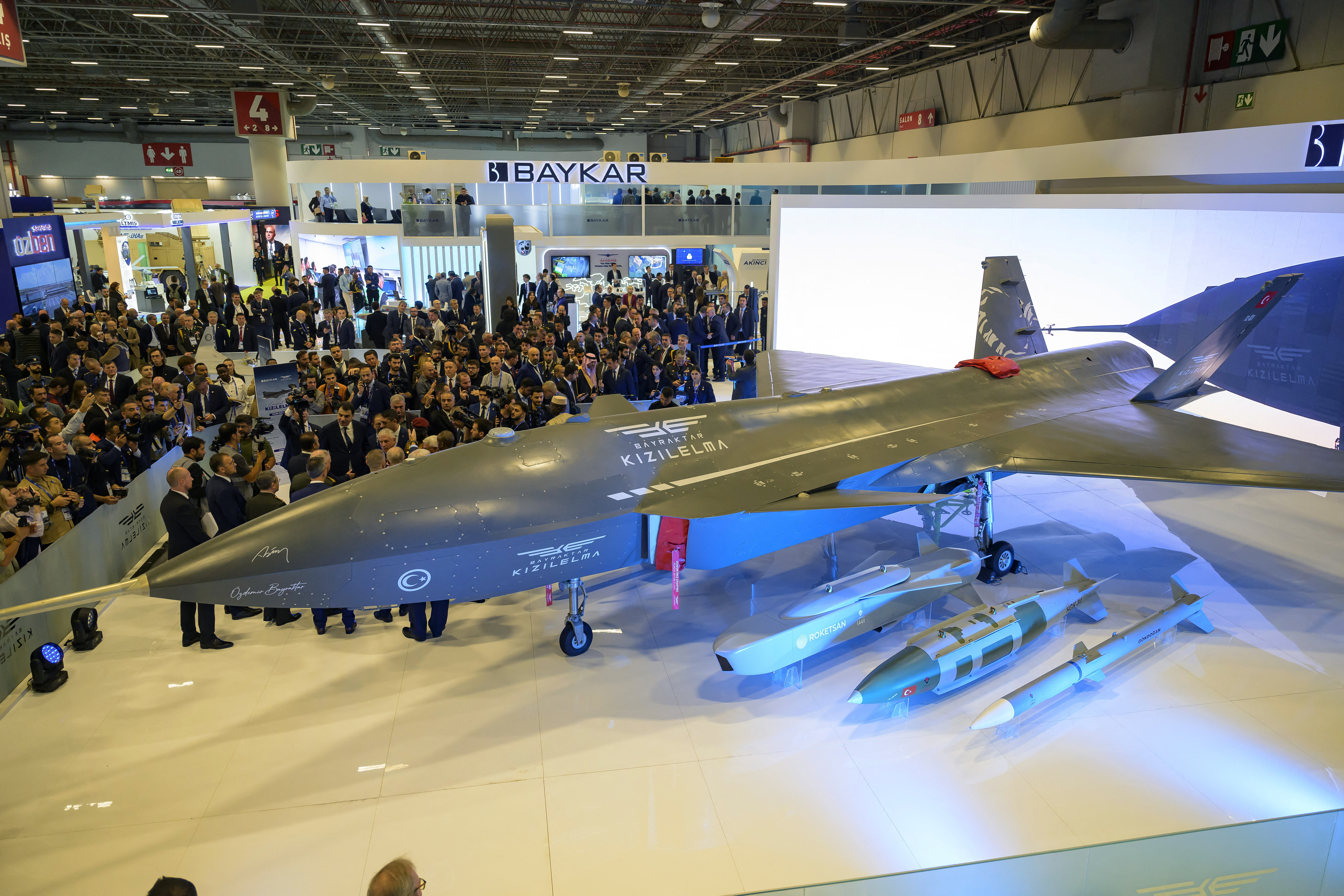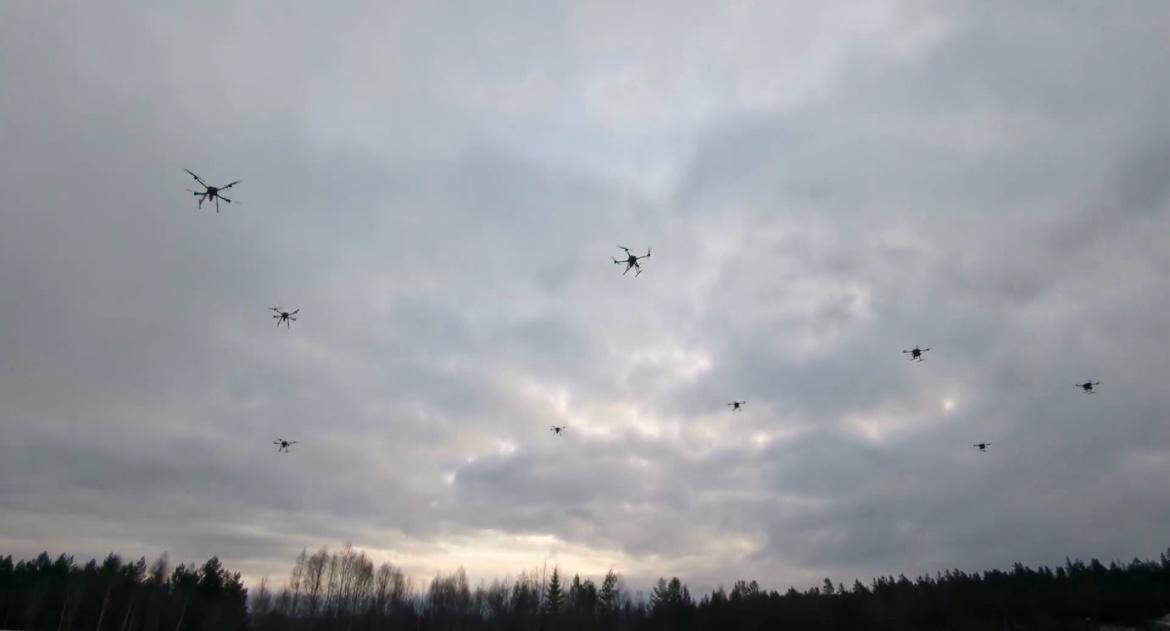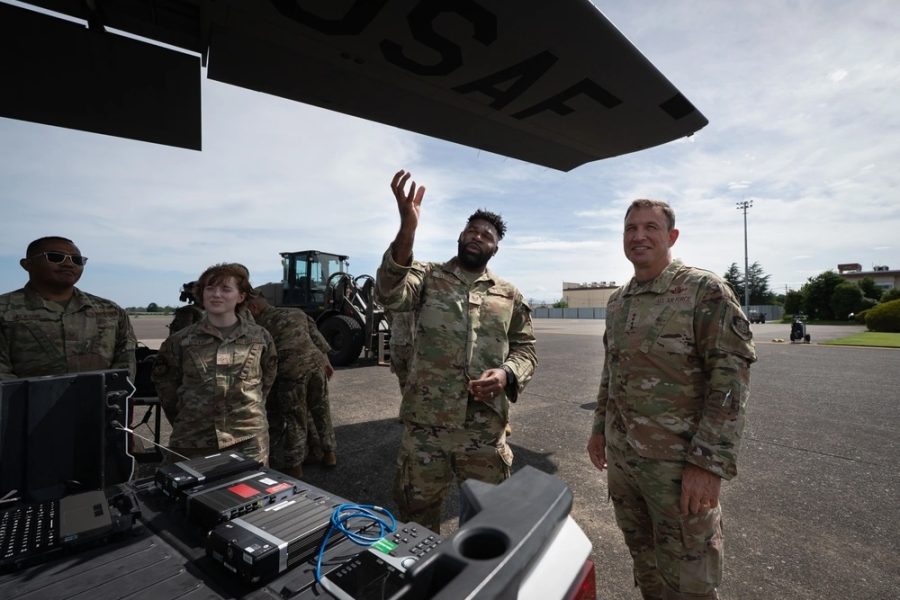
ANDERSEN AIR FORCE BASE, Guam—A massive U.S. military exercise in the Pacific is exploring how adding new communications equipment to cargo and refueling aircraft can help coordinate large troop movements across thousands of miles of open ocean.
“We like to say flexibility is the key to air power, right? That flexibility, the agility to adjust to a changing environment … gives us a great ability to maneuver,” Gen. John Lamontagne, the head of Air Mobility Command, told Air & Space Forces Magazine July 16 in an exclusive interview. “I think it all comes down to communication.”
Military aircraft are often unable to share data with each other without the help of equipment that translates between their incompatible software, or of satellites that send data back to a central processing point on land—a major problem for the U.S. Air Force as it prepares for a possible conflict with China in the vast Pacific, where technology can be jammed and distance adds an extra layer of difficulty. The 2025 edition of Mobility Guardian, AMC’s biennial combat training exercise, wants to make sure the airlift and tanker fleet aren’t cut out of the loop.
Mobility Guardian offers Air Force transport planes, tankers, and ground crews the chance to practice rapid deployments as a force, rather than as one-off units, from their home stations in the continental United States.
About 85 mobility aircraft and 2,245 Airmen have participated in the exercise so far this year, moving more than 7,000 troops and 5,000 tons of supplies and equipment in seven days, an AMC spokesperson said. That’s a larger lift than in 2023, when the exercise brought 70 aircraft and 3,000 troops to the Pacific.
The event, which began July 8 and is slated to run through mid-August, is part of a new type of war game called the Department-Level Exercise (DLE). In total, about 12,000 Airmen and Space Force Guardians are practicing missions across the Pacific alongside the other U.S. armed forces and America’s foreign allies and partners, as they would if the U.S. goes to war with China.
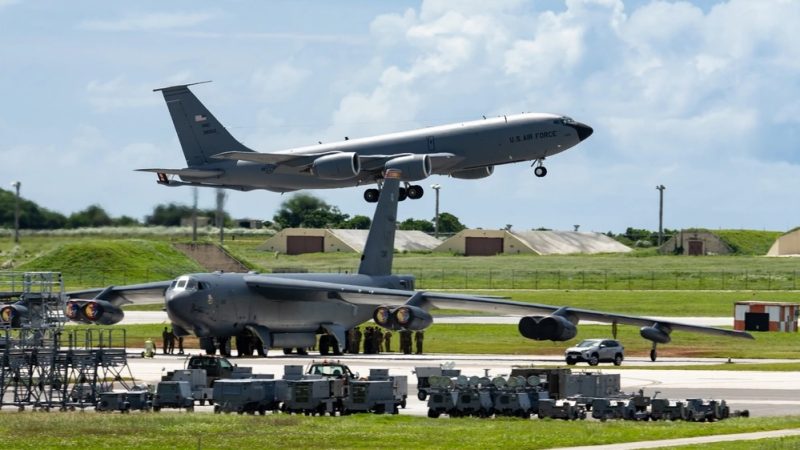
The DLE encompasses multiple smaller, concurrent exercises such as Pacific Air Forces’ Resolute Force Pacific and Air Force Special Operation Command’s Emerald Warrior, as well as training led by other branches of the U.S. and foreign militaries.
It’s a world away from the first edition of Mobility Guardian in August 2017, which then-Col. Lamontagne helped run as the acting air forces coordinator. That exercise was based at Joint Base Lewis-McChord, Wash., where tropical weather and diplomatic clearances weren’t yet complicating matters.
“We’ve certainly had some weather impacts to the deployment cycle and tempo, but that is exactly what our team is going to face in real life,” Lamontagne said about this year’s exercise. “So it is probably the way we should exercise going forward.”
Connection
Staying flexible means troops in the air and on the ground must constantly update each other on the weather conditions, maintenance problems, changing aircraft demands, airfield support, and countless other factors that affect how many aircraft can perform as tasked on a given day.
AMC officials saw firsthand at Mobility Guardian 2023 the difficulties AMC aircraft encountered because they lacked communications equipment that would allow planes to share information without being in visual range of each other. Then-AMC boss Gen. Mike Minihan made procuring those tools a top priority, as part of a push to equip a quarter of the mobility fleet with modern connectivity and situational awareness gear by fiscal 2025—a goal the command ultimately fell short of.
The effort continued at this year’s Pacific event, where eight tankers and transport aircraft sported technology such as the Airlift Tanker Open Mission Systems kit.
The ATOMS kit is a backpack-sized rectangular prism, sprouting with wires, that lets aircrews connect to classified and unclassified internet via their electronic flight bags—the touchscreen tablets they carry onto the aircraft.
On a July 9 C-17 transport flight from Travis Air Force Base, Calif., to Andersen AFB in Guam, pilots used ATOMS to check upcoming flight plans, get weather updates, and talk to other aircraft and ground crews in real time. That connection can also be a lifeline for Airmen flying alone over the dark Pacific.
“It’s nice being able just to message somebody and let them know where we are and what we’re going to need at a location,” said the aircraft commander, Capt. Milton Doria. “Having connectivity to the internet while you’re flying is a game changer.”
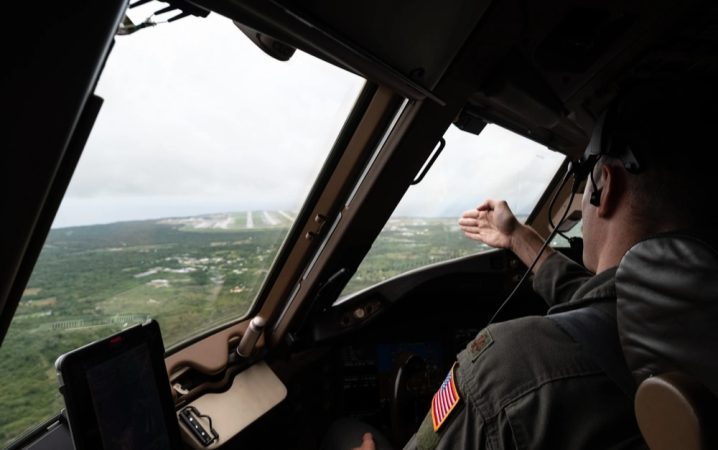
Pilots aboard the smaller C-130 transports saw similar results. Lt. Col. James Vanderneck, who ran a detachment of C-130s flying airlift missions between Guam and nearby islands, credited their wins so far to a colleague in charge of C-130 flight planning who could keep working while he flew into theater on an ATOMS-equipped tail.
“He’s able to get information to continue his planning and to make sure everything stayed on track, which is, I think, part of the reason why we showed up here with everything still functioning,” said Vanderneck, who also commands the 41st Airlift Squadron at Little Rock Air Force Base, Ark.
Lamontagne saw the impact of improved comms up close during his flight into the region aboard an ATOMS-equipped tanker. The crew used their internet connection to put together an unplanned refueling for a pair of F-35 fighters “to help them extend their day a little bit and provide some additional training opportunities,” he said.
Later in the exercise, about a dozen KC-135 and KC-46 tankers took off from Guam to support six C-17s flying from Alaska to Australia to drop about 330 paratroopers as part of the bilateral Talisman Sabre exercise.
“There were some late changes to the plan, but they were thousands of miles apart,” Lamontagne said. “Both formations had an ATOMS tail, and they were able to communicate over the horizon, pass real-world updates, refine the air refueling plan, so that it wasn’t a complete furball when they hit the air refueling initial point.”
“The teams obviously want more of that,” he added. “Our ability to scale that over time and deliver that makes it much easier for us to do our job.”
Lessons learned during this summer’s exercise are expected to guide larger buys of connectivity equipment. In its 2026 budget request revealed earlier this month, the Air Force asked Congress for $13.1 million for the Real Time in the Cockpit (RTIC) program, which lets KC-135s connect to tactical data networks. The funding would cover installing RTIC on 17 aircraft. About 59 already have the system, according to budget documents.
The Air Force also requested $19.3 million for upgrading KC-46 communications and $11.6 million for improving connectivity at the 618th Air Operations Center, which directs mobility missions from AMC headquarters at Scott Air Force Base, Ill.
Congress has already approved a much larger sum for mobility connectivity as part of Republicans’ sweeping tax-and-spending package that became law July 4. Those funds include $116 million for improving connectivity in the C-17 fleet, and another $84 million for the same purpose for KC-135s. That money can be used for any kind of data-sharing equipment on the two aircraft.
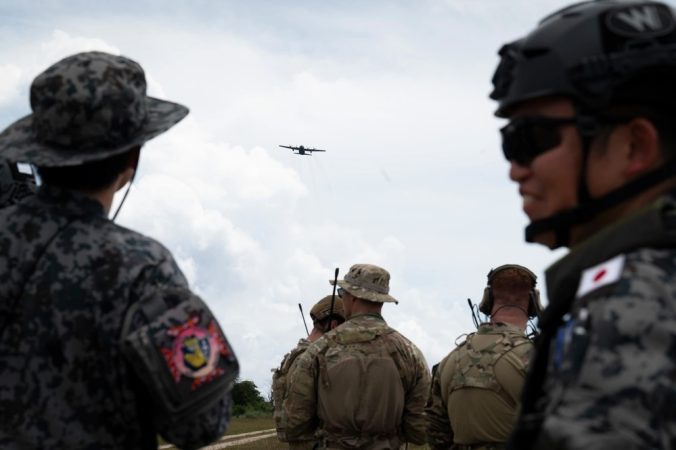
Stretch Every Tail
AMC also wants better communication technology so it can be more efficient when real-world crises hit. Just three weeks before the joint exercise kicked off, the Air Force sent more than two dozen tankers to Europe as the Trump administration weighed options for striking targets in Iran.
That surge came after years of strain on mobility aircraft, from refueling fighters en route to the Middle East in response to rising tensions between Israel and Iran, moving war supplies in support of conflicts in Ukraine and Israel, the U.S. withdrawal from Afghanistan, and responses to other emergencies worldwide.
Lamontagne said recent demands in Europe and the Middle East made it “absolutely more difficult” to find planes ready to send to the Pacific, which “basically flushed the wings of just about every training tail they have.”
“The good news is, this is training,” he said. “It is a great opportunity to exercise as an Air Force as well as with the joint force, but it absolutely comes at a toll and a price.”
That applies to Airmen too. The Air Force is shifting to a new force generation model called AFFORGEN, where units go through 24-month cycles broken into six-month phases: “reset,” “prepare,” “certify,” and “available to commit.”
The cycles are meant to keep squadrons together and ensure a more regular deployment schedule, but some Airmen say it’s difficult to adapt the concept to mobility units due to high demand for their planes throughout the year. For the DLE, AMC hoped to rely on Airmen who could use the exercise as a training event as they moved into the “certify” phase.
“Unfortunately, based on the heavy demands in CENTCOM, we were not able to just very cleanly use the teams that are in the ‘certified’ bin,” Lamontagne said.
Some of the Airmen deployed to Guam for the exercise may be there for a month, come home for a few weeks, then deploy again for six months. Others are still in the “prepare” and “reset” phases. The exercise’s timing may not be ideal for them, or for some of the aircraft involved, but the general said the commitment is worth the reward in readiness.
“At the end of the day, we only do it at this scale once every other year. So it was worth the commitment, worth the effort,” he said. “It’s a great opportunity to make our Air Force stronger, to strengthen the integration across our forces, as well as with our allies and partners.”
The post US War Game in Pacific Tests New Air Mobility Comms Technology appeared first on Air & Space Forces Magazine.

Air, Air Mobility Command, communications, department level exercise, Gen. John D. Lamontagne, Mobility Guardian, Training
Air & Space Forces Magazine
[crypto-donation-box type=”tabular” show-coin=”all”]

